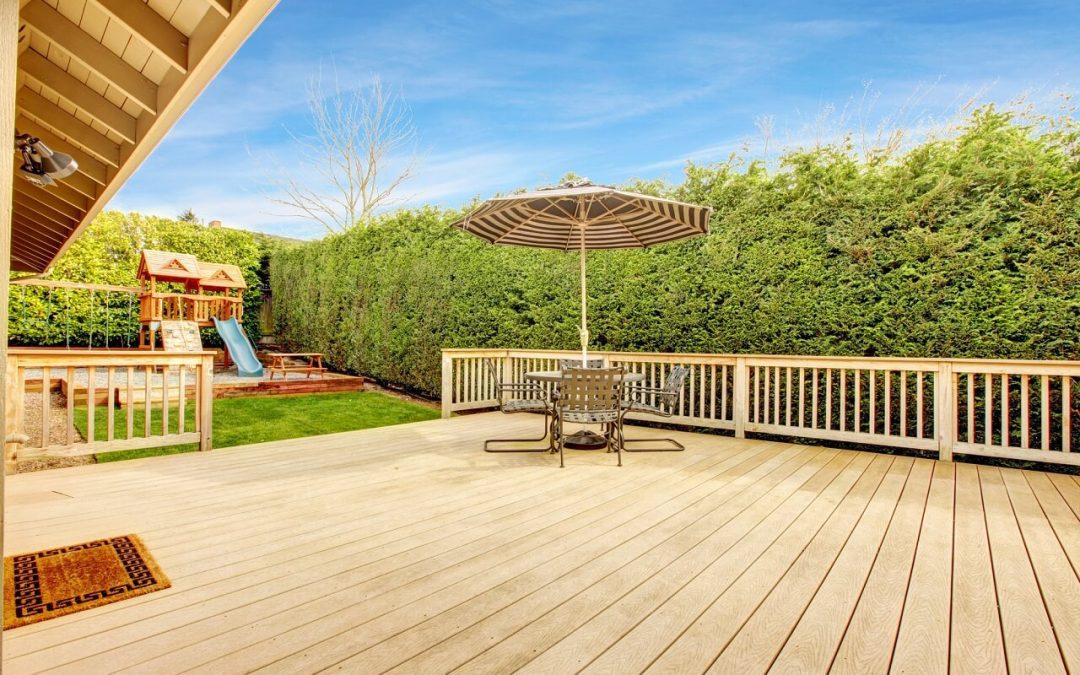Decking materials have come a long way, giving homeowners many options when building a backyard deck. Each material has advantages and disadvantages, so weigh them carefully before deciding. Here are a few different types of decking materials available to homeowners.
Pressure-Treated Wood Decking
Pressure-treated wood is the most common decking material used in the United States. It is affordable, easy to work with, and readily available at most home improvement stores. Pressure-treated wood is chemically treated to resist rot, insects, and decay. It is usually southern yellow pine and can be stained or painted to match a home’s style.
The key advantages to pressure-treated lumber are that it is affordable, widely available, and easy to work with. The downsides are that this type of wood requires regular maintenance and can be prone to warping or splitting.
Cedar and Redwood Types of Decking Materials
Cedar and redwood are woods naturally resistant to insects and decay. They are also more stable than pressure-treated wood, making them less prone to warping, rot, and splitting. Cedar and redwood are more expensive than pressure-treated wood but last for decades with proper maintenance.
The pros of choosing cedar or redwood decking include the natural beauty of wood, their resistance to insects and rot, and they are durable and long-lasting materials. The expense of these woods and the required regular maintenance are downsides to selecting these decking materials.
Composite Decking
Composite decking is a popular alternative to wood decking. It is made of wood fibers and plastic, making it more durable and resistant to rot and insects than natural wood. Composite decking requires little maintenance and is available in various colors and styles, some mimicking natural wood.
Composite decking is easy to care for, long-lasting, and available in many colors and styles. The downsides are that it is more expensive than pressure-treated wood and can be prone to fading and scratching.
Types of Decking Materials: PVC
PVC decking is 100% plastic, making it quite durable. PVC is resistant to rot, insects, and fading and requires little maintenance. This type of decking is available in various colors and styles and is sometimes manufactured to look like natural wood.
PVC decking has two major advantages: it is strong and low maintenance. The disadvantages are that PVC decking is costly and prone to expansion and contraction due to temperature changes.
Aluminum Decking
Aluminum decking is a relatively new material that is gaining popularity. It is made of extruded aluminum planks, making it strong, durable, and resistant to rot, insects, and fire. Aluminum decking is available in a variety of colors and styles, and it requires very little maintenance.
Aluminum has a few advantages. It is highly durable, long-lasting, low-maintenance, and resistant to rot, insects, and fire. Its downsides include the cost and aluminum can be slippery when wet. Some homeowners dislike the industrial look of aluminum decking.
There are many types of decking materials available for homeowners to choose from. Pressure-treated wood, cedar and redwood, composite decking, PVC decking, and aluminum decking have unique properties, advantages, and disadvantages. Homeowners should consider their budget, maintenance preferences, and desired aesthetics when choosing the best material for their backyard deck.
Stevens Home Inspections provides inspections to customers in the Northern Texas area, including Dallas, Frisco, Plano, Allen, and Prosper. Contact us to request our services.

